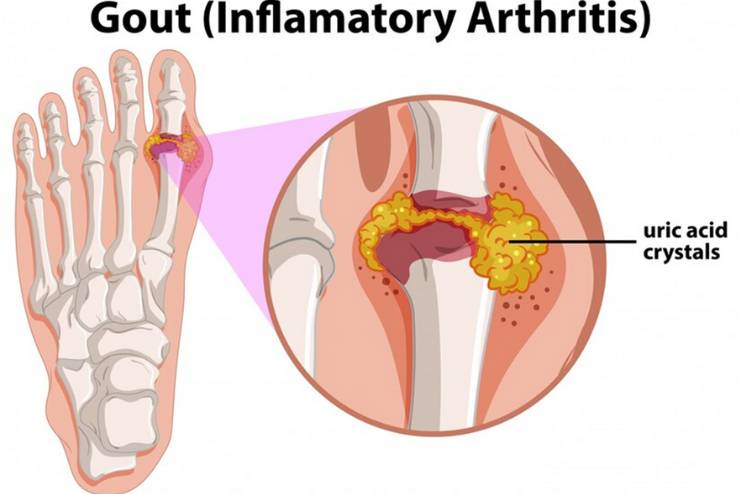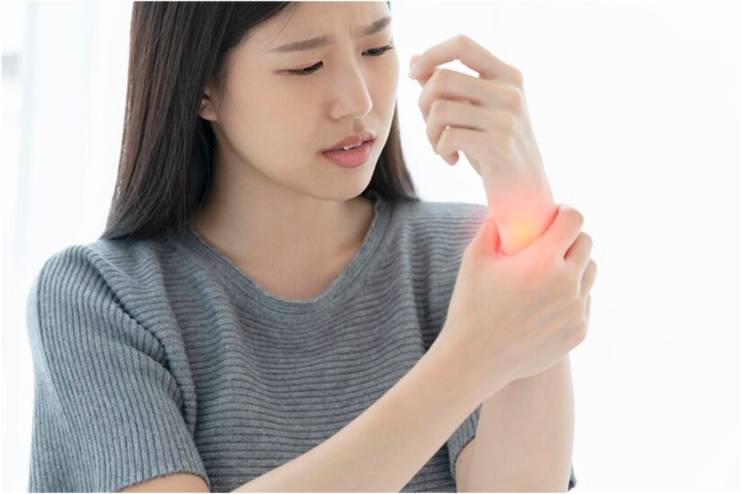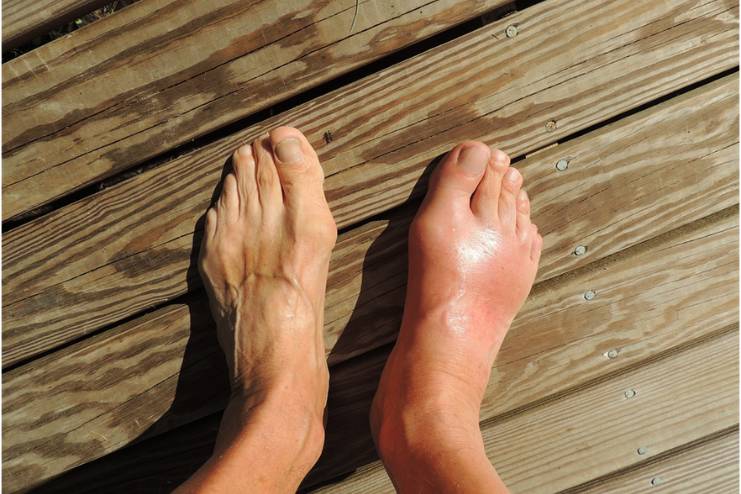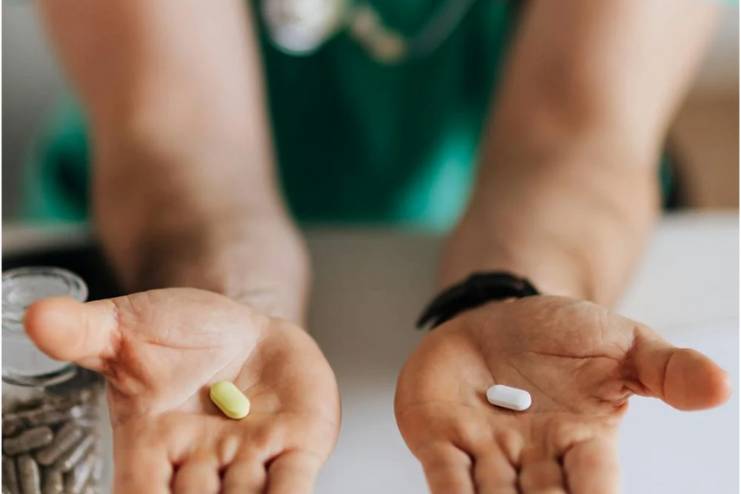Affiliate Disclaimer
Some links in this article are affiliate links. We may earn a small commission if you make a purchase through these links, at no extra cost to you. We only recommend products we find useful to our readersGout is known to affect one’s daily activities to a great extent by causing sudden and severe pain in the affected joints. These painful episodes make it difficult to do simple tasks. Therefore, looking out for the early symptoms of gout flare-ups plays an important role in effectively managing and preventing long-term damage.
Early detection can ensure immediate treatment and thus relieve symptoms in a very short period, besides reducing the frequency and severity of future attacks. Understanding the key symptoms and risk factors associated with gout will help one seek medical advice early to better manage the condition. In this article, we will understand gout, the importance of early detection, and the primary symptoms.
What is Gout?

Gout is an inflammatory arthritis characterized by sudden and severe pain, redness, and swelling of joints. It results from uric acid buildup in the blood, a waste product formed when the body breaks down the purines in foods and drinks we consume. The uric acid typically gets dissolved in the blood and is excreted by the kidney in urine. However, the excess uric acid crystallizes when the kidneys stop removing it efficiently.
These sharp, needle-like crystals deposit in the joints and surrounding tissues. The result is excruciating pain and inflammation, a gout attack. It mainly affects the big toe, though it may affect other joints, such as knees, ankles, wrists, and elbows. The exact cause of gout varies; it ranges from genetics to excess weight to certain medications and pre-existing conditions like high blood pressure or diabetes. Knowing the causes of this uric acid accumulation and crystal formation in joints would significantly help manage and prevent gout.
Common Symptoms of Gout

Gout symptoms are often severe and there is a sudden onset. Recognizing the symptoms can help manage and reduce the severity of gout flare-ups.
Classic Signs of Gout
Common symptoms of gout include very severe and sudden pain in the affected joint. This gout pain mostly starts at night and reaches a level that even light pressure from the bed sheet is not bearable. The affected joint often appears red and swollen and feels warm to the touch. In some cases, inflammation and tenderness may worsen within 24 hours and last several days to a week or more.
Commonly Affected Joints
Although gout can affect any joint, it most commonly affects the big toe. This condition is known as podagra. Other commonly affected areas are the ankles, knees, elbows, wrists, and fingers. The joints may feel stiff, and their motion may decrease during a flare. Chronic gout, due to repeated attacks, progresses into chronic gouty arthritis, which is characterized by persistent joint pain and damaged joints.
Recognizing Patterns
Gout symptoms follow a pattern. First, pain and swelling may occur only in one joint. Over time, flare-ups can occur more frequently and affect multiple joints. It is crucial to understand these patterns and to see a doctor when the first symptoms of flare appear to manage the condition effectively.
Knowing these common symptoms and affected areas, most people can take essential steps to manage the pain and minimize the impact on day-to-day activities.
Early Warning Signs of a Gout Flare-Up

Recognizing gout attacks early can help manage and prevent the severe pain associated with this condition. Early signs of gout flare-up are:
- There is a tingling or a burning sensation in the affected joint. This pain may be mild initially and sharpen over time.
- Mild pain or stiffness of the joint may come before the acute pain. The stiffness may be felt upon waking up in the morning or after a prolonged period of inactivity. Though mild, the pain shows that uric acid crystals are starting to pile up in the joint.
- Occasional attacks become more frequent.
Steps to Take When You Notice Early Signs

Noticing the early signs can help one immediately manage the gout flare-up and minimize discomfort.
1. Rest The Joint: Allow the joint to rest; this can be the first step. Staying away from activities that put a load on joints can reduce inflammation and pain.
2. Apply Ice: The application of ice in the affected area would also soothe the joint. The ice packs should be wrapped in a cloth and applied to the joint for 20-minute intervals to reduce swelling and make the area numb. This will slowly relieve the pain.
3. Elevate The Limb: Elevating the limb would decrease swelling by draining the fluid from the joint.
4. Stay Hydrated: Staying well-hydrated during an attack of gout is very important. Water aids in thinning uric acid present in the blood. This enables its removal through urine. It further prevents the formation of more uric acid crystals and thus reduces the severity of a flare-up.
5. Over-the-counter Medication and Anti-inflammatory Drugs: Over-the-counter drugs, primarily consisting of nonsteroidal anti-inflammatory drugs, can quickly decrease pain and inflammation. Examples of NSAIDs are ibuprofen (Advil, Motrin) and naproxen (Aleve). These drugs alleviate the acute symptoms of an attack and improve the management of daily activities.
Doctors also prescribe anti-inflammatory drugs like colchicine, which are targeted to reduce inflammation and prevent further attacks. It is advisable to consult a doctor before taking any medication to avoid side effects.
When you first notice early signs of a gout flare-up, these steps can help manage the symptoms effectively, reducing pain and preventing further complications. Early intervention and proper management are essential to maintain joint health and provide pain relief.
Long-Term Management and Prevention

Managing and preventing gout flare-ups requires lifestyle changes, medications, and regular healthcare monitoring. Here are key strategies to help maintain control over gout and prevent future attacks:
1. Lifestyle Changes: Diet, Weight Management, Avoiding Triggers
Diet plays a significant role in gout management.
- Reduce the intake of purine-rich foods, such as red meat, organ meats, and certain seafood (e.g., sardines and anchovies). This will help lower uric acid levels in the blood.
- Instead, focus on a balanced diet rich in fruits, vegetables, whole grains, and low-fat dairy products.
- Avoid alcohol, especially beer, and sugary beverages to help prevent uric acid buildup.
- Weight management is also crucial. Maintaining a healthy weight reduces stress on the joints and lowers the risk of gout attacks.
2. Medications Prescribed by a Doctor
A doctor may prescribe medications to manage gout and prevent flare-ups. Common medications may include uric acid-lowering drugs such as allopurinol and febuxostat. Doctors may prescribe colchicine or corticosteroids to reduce pain and inflammation during acute flare-ups. Take these medications as prescribed and discuss any side effects or concerns with your doctor.
3. Regular Monitoring and Follow-Ups with a Healthcare Provider
Long-term care for gout includes regular visits to your doctor. Follow-up visits with your doctor are very important to monitor uric acid levels, assess kidney function, and evaluate your overall health. Your doctor will adjust medications as necessary and advise on lifestyle modifications. Track gout attacks and their frequency and severity to help your doctor individualize your treatment plan.
4. Staying Informed and Proactive
One preventive measure is learning about the disease and taking preventive steps. This includes knowing what triggers gout, taking medications as prescribed by your doctor, and continuing to make lifestyle changes accordingly. Families, friends, and support groups for gout can also help spur a person on and advise tips for gout management.
When to Seek Medical Help

Knowing when to see a doctor for gout is important to prevent complications and manage gout flare-ups effectively. Here are some key signs indicating it’s time to seek medical advice:
1. Persistent or Worsening Symptoms
- If one has recurrent or worsening symptoms of gout, characterized by severe pain, swelling, and redness in the affected joint, and no home remedies seem to help, it is time to see a doctor.
- Prolonged discomfort and immobility can lead to joint damage and other gout complications.
2. Signs of Infection or Complications
Occasionally, gout can lead to infections or other serious complications. Signs of infection include:
- Increased redness
- Warmth and tenderness around the joint
- Fever and chills
If you notice any of these symptoms, see a doctor immediately. Infections in the joint can cause harm and require antibiotics.
Importance of Timely Medical Intervention
Timely medical intervention, when experiencing persistent or severe gout symptoms can prevent further progression of gout and reduce the risk of long-term complications. It helps manage pain, reduces inflammation, and reduces uric acid levels to forestall further attacks. Regular follow-ups with your doctor will ensure that you can monitor and adjust your treatment plan accordingly.
Conclusion
Early gout detection and addressing the signs are essential for effective management and prevention of complications. Understanding what gout is, identifying common and early symptoms, and knowing the immediate steps to take can help mitigate the impact of flare-ups. Long-term gout care and management, including lifestyle changes and regular medical monitoring, is crucial for preventing future attacks. If symptoms persist or worsen, seek medical help to avoid severe complications. By staying informed and proactive, individuals can manage gout flare-ups effectively.
In this Article



















